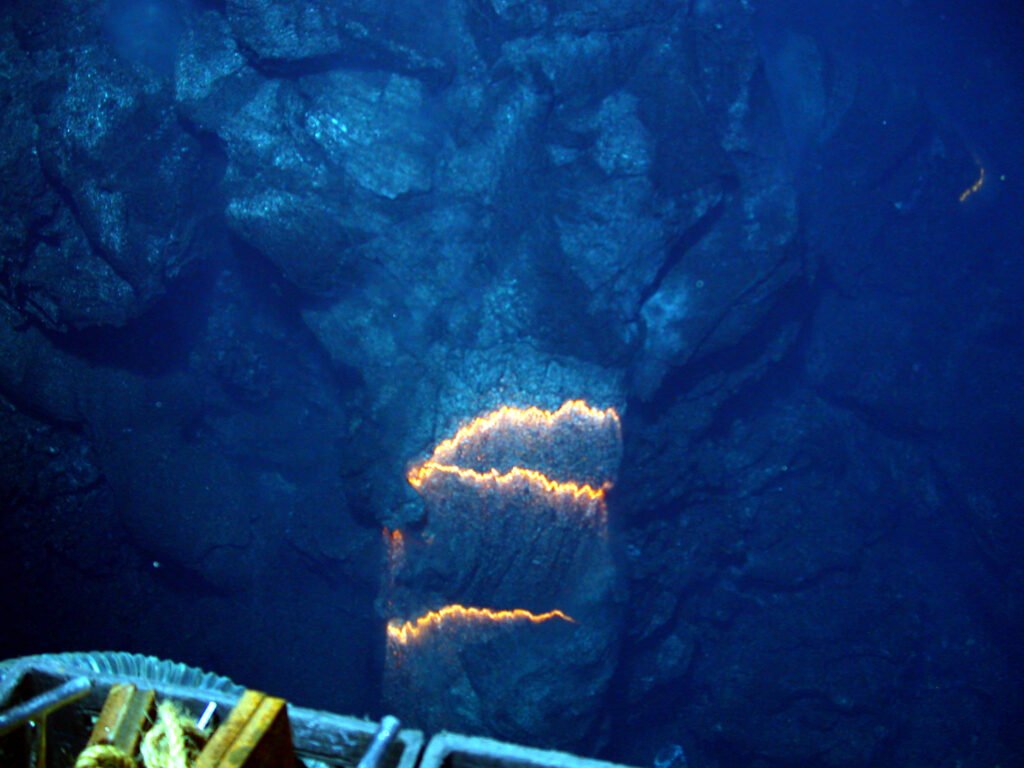Somewhere beyond the reach of sunlight, the seafloor is alive with heat that never sees a flame. In blackness deeper than any night sky, chimneys of metal and stone belch shimmering water that can scorch yet never boil away. For decades, this realm sounded like fantasy – until cameras and submersibles revealed hydrothermal vents and the bustling worlds they feed. These places have reshaped how scientists think about energy, life, and even our own beginnings. The mystery now is not whether life can thrive without the sun, but how far that shadowed strategy can go.
The Hidden Clues

Picture water roaring from the seafloor at oven-hot temperatures, yet staying liquid in the crushing deep. The vents that power this scene lie where Earth’s crust is thin or fractured, letting seawater percolate down into hot rock and return superheated. As it rises, the fluid carries a cargo of metals and gases, building chimneys that look like castle turrets dusted with soot. Scientists call the darkest plumes black smokers for a reason: they spit out particles of iron and sulfur that turn the water inky. A few meters away, paler white smokers release cooler, carbonate-rich fluids that billow like ghostly steam.
These spots are not rare curiosities but the heartbeat of unseen mountain chains that girdle the globe. Mid-ocean ridges, back-arc basins, and volcanic arcs can host vent fields that flicker on and off as magma pulses. Each field has a chemical fingerprint shaped by the rocks below and the seawater above. Even the shimmer that gives vent water its mirage-like look is a clue – warm, mineral-heavy fluids bend light differently than the icy sea around them. Follow that shimmer, and you often find life stacked like a stadium crowd.
What Boils Without Fire
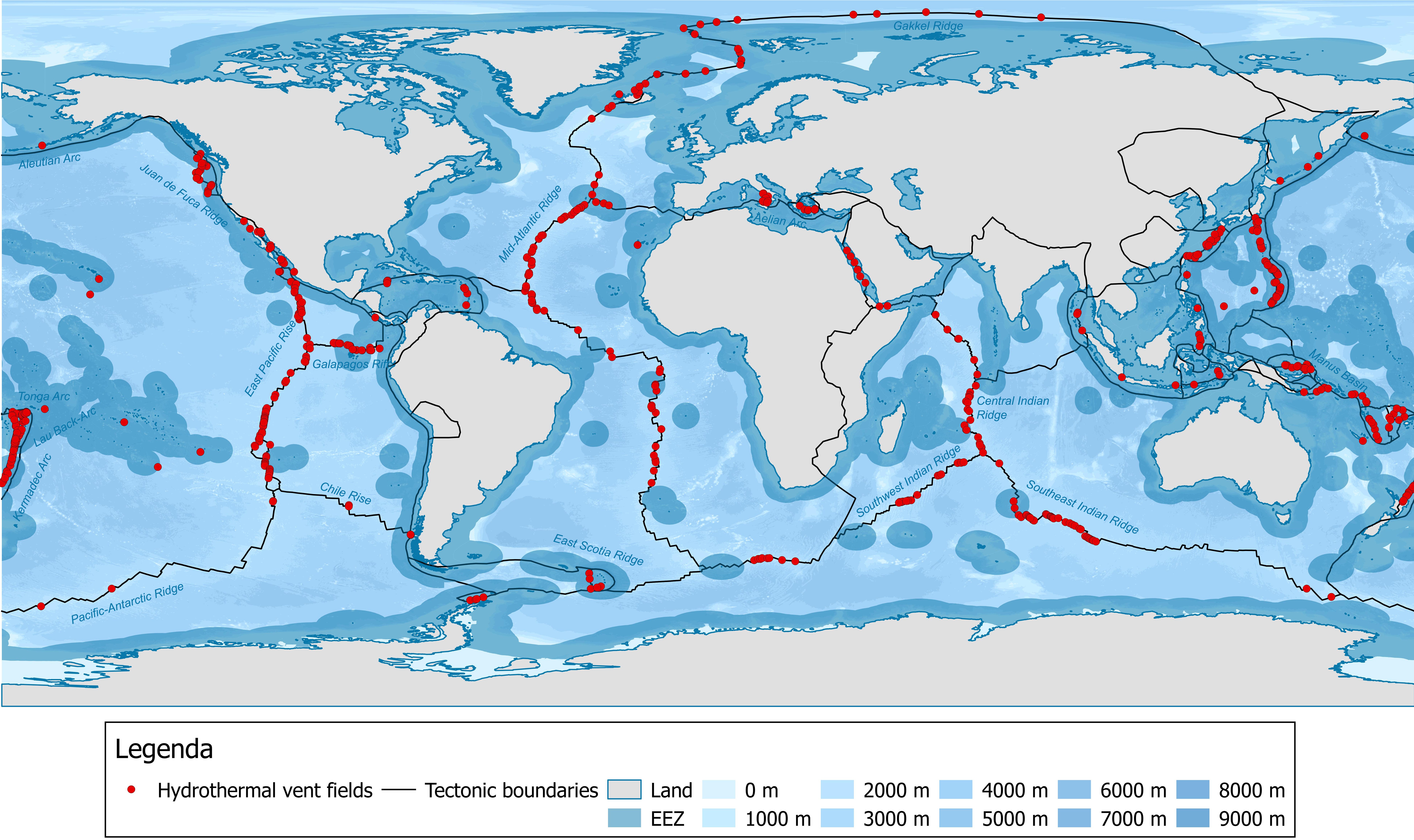
At sea level, water boils at 100°C (212°F), but deep in the ocean, pressure rewrites the rules. Down where the vents roar, the weight of kilometers of water raises the boiling point far beyond everyday numbers, allowing fluids to gush at temperatures that would destroy kitchen pots. In some settings, conditions nudge water toward a supercritical state where it behaves neither like a typical liquid nor a gas. That peculiar physics helps fluids dissolve metals and gases from hot rock with ruthless efficiency. When the mixture meets cold seawater, minerals fall out like snow in a blizzard, stacking chimneys upward.
This is where the “boil without fire” idea earns its name: heat comes from Earth’s interior, not flames or sunlight. The result is one of the planet’s steepest gradients – scalding vent fluid mixing with almost freezing seawater within arm’s reach. Across that knife-edge, chemistry sprints, releasing energy microbes can capture. In the simplest terms, rocks and water become a battery, and life learns how to plug in. It’s a power outlet you’d miss unless you looked past the dark.
Chemistry That Rewrites the Rules
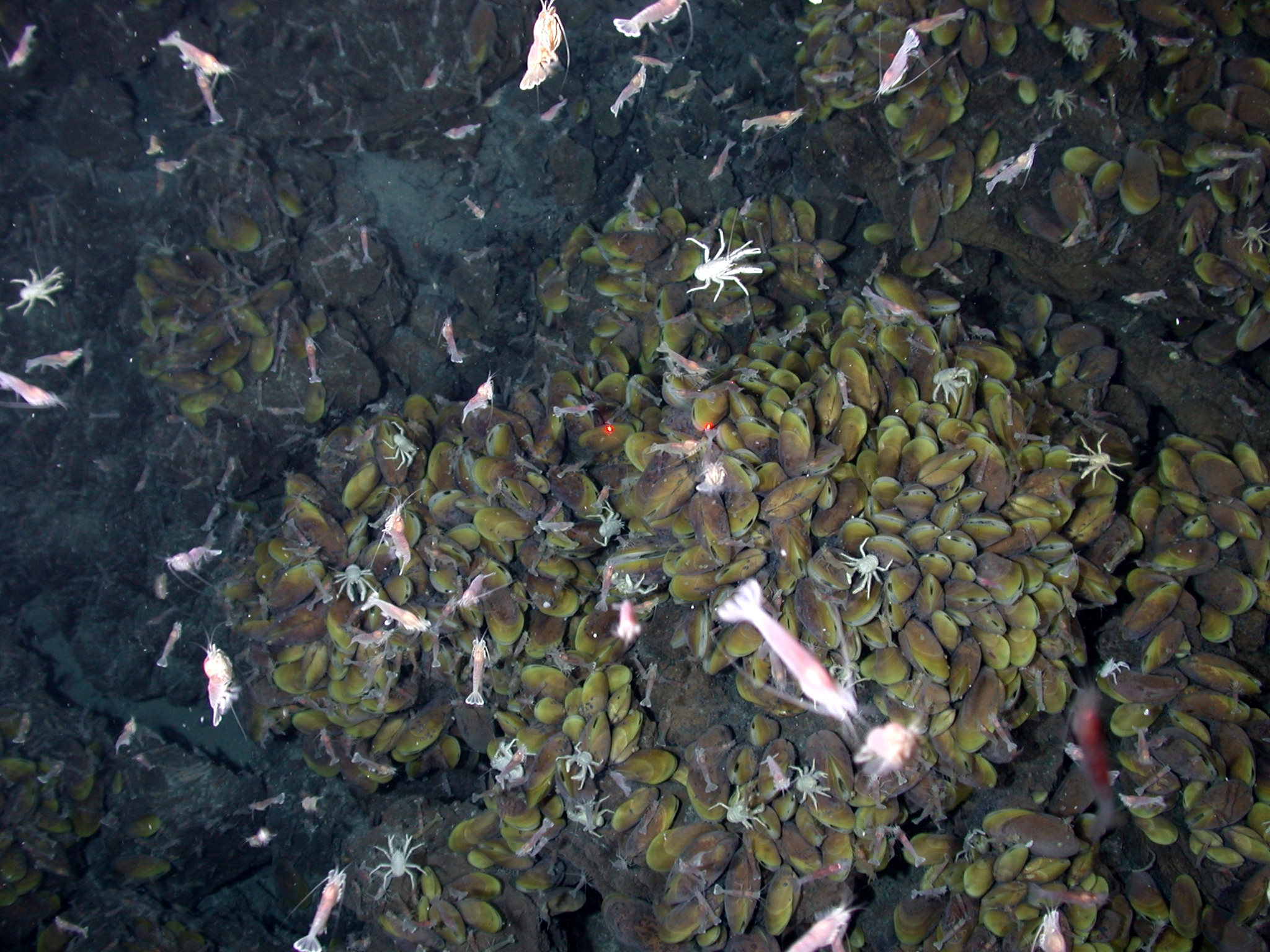
Photosynthesis runs on photons, but chemosynthesis runs on reactions between molecules bearing energy-packed bonds. Vent microbes tap compounds like hydrogen sulfide, hydrogen, and methane, using oxygen – or sometimes nitrate and sulfate – as electron acceptors to extract work. The payoff is chemical energy turned into sugars and biomass, the same currency that fuels the rest of the food web. Where sulfide is abundant, sulfur-oxidizing bacteria dominate; where hydrogen rules, methanogens and other specialists seize the stage. Switch the fuel, and you switch the cast of characters without turning on a single light.
Alkaline vent systems add a different twist: water-rock reactions called serpentinization generate hydrogen and set up natural pH and redox gradients. Those gradients act like primitive batteries across mineral surfaces, hinting at how early metabolisms could have started before complex enzymes evolved. Some researchers see these inorganic pores as scaffolds for the first biochemical pathways, with metals acting as tiny catalysts. Whether or not life began here, vents prove that metabolism doesn’t need sunlight to flourish. It just needs the right imbalance – and the deep sea has plenty.
Architectures of Life in the Dark
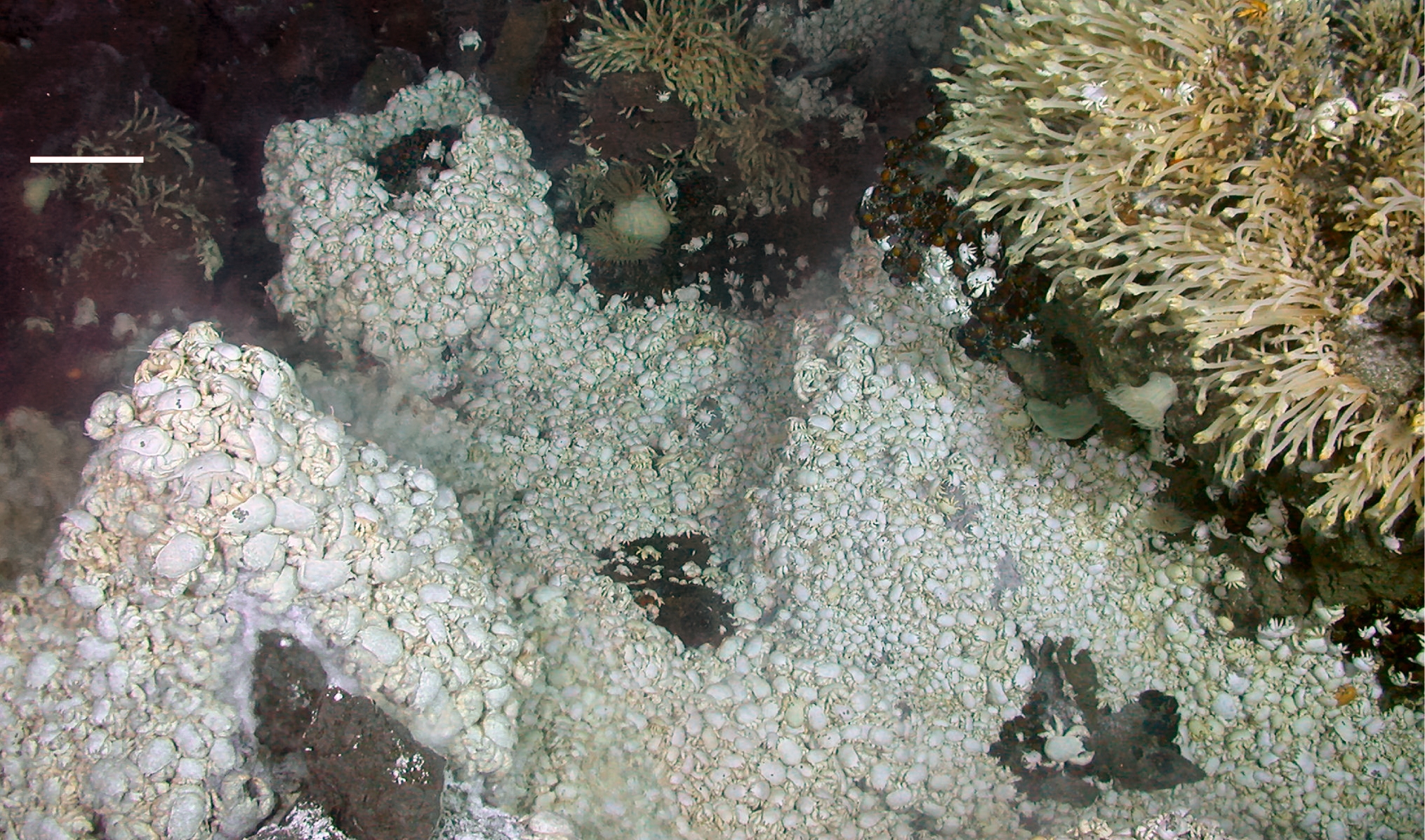
Stand near a vent (from the safety of a sub) and the scene feels contradictory: stark rock fringed by extravagant life. Tube worms unfurl scarlet plumes; mussels and clams cluster in shining banks; shrimp swarm through shimmering water like sparks from a forge. Much of this abundance is built on symbiosis, where animals house chemosynthetic microbes in their tissues, trading protection and chemicals for food. The animals become living greenhouses for microbes that don’t need light, only the right molecules drifting past their gills. It’s partnership as architecture, each species shaping the other’s space.
These neighborhoods are boomtowns and ghost towns at once. A vent can roar for years, then fade as geology shifts and plumbing reroutes below. Larvae ride deep currents to colonize new hotspots, seeding fresh communities with uncanny speed. In the turnover, scientists see time-lapse evolution, with species specializing for subtle differences in heat and chemistry. Life here moves to the tempo of the planet’s crust, not the sun’s daily arc.
From Ancient Tools to Modern Science
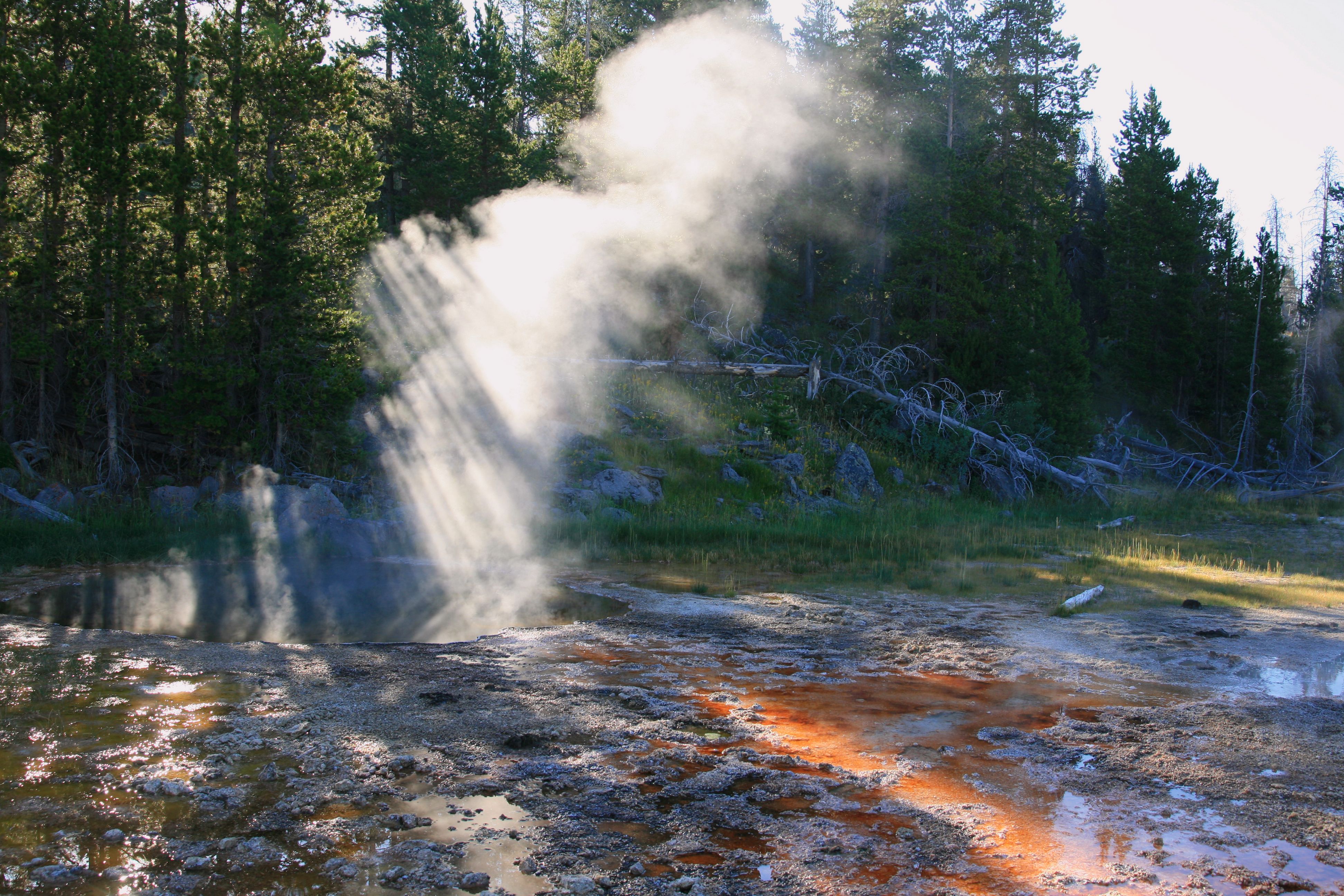
The first definitive look at hydrothermal vents in the late twentieth century turned ocean science on its head. Since then, fleets of submersibles, remotely operated vehicles, and autonomous explorers have transformed exploration from rare expeditions into systematic campaigns. Onboard labs now trail the plume in real time, mapping chemicals and particles with sensors the size of a backpack. Isobaric samplers bring fluids to the surface without letting their gases fizz away, preserving the chemistry scientists need to read the subsurface like a diary. Genomic tools, meanwhile, reveal entire microbial communities from a few liters of seawater.
The first time I watched live footage from a vent, the scene felt strangely familiar, like a city filmed at night from a helicopter. Hot junctions pulsed; crowds shifted; new construction rose where the flow was strongest. That sense of motion is not just visual drama – it reflects active plumbing, growth, and competition. Today, long-term observatories leave instruments in place for months or years, catching the rhythms we miss on quick visits. The vents don’t just exist; they perform.
Why It Matters
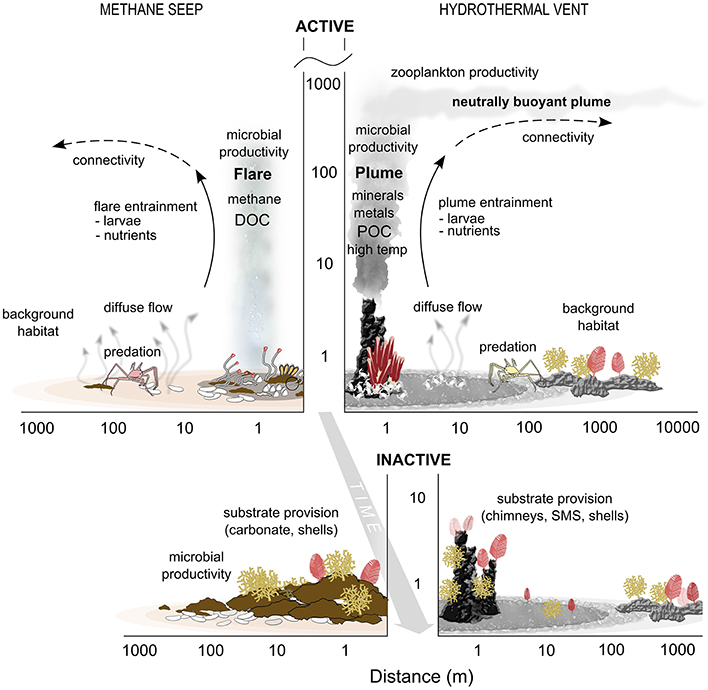
Hydrothermal vents bridge geology and biology in a feedback loop that touches the whole planet. They help cycle carbon, sulfur, and metals between rock and ocean, influencing seawater chemistry over long timescales. Their mineral deposits, called seafloor massive sulfides, record Earth’s volcanic pulse and the history of ancient oceans. The microbes that run these systems carry enzymes that shrug at heat and acidity, inspiring industrial catalysts and medical tools. Vents also serve as real-world laboratories for ideas about life’s origin, where energy gradients, minerals, and organic molecules collide.
Importantly, vents widen our search image for life beyond Earth. Icy moons like Europa and Enceladus likely hide oceans warmed from below, not above. If chemistry can drive ecosystems here, similar reactions might power biospheres there. Compared with photosynthetic food webs, vent communities rely on a more local energy source, making them resilient to surface catastrophe. That difference reframes what habitability means – and challenges the notion that sunlight is mandatory for thriving worlds.
Global Perspectives

Vents punctuate the seafloor across the Pacific, Atlantic, Indian, and Southern Oceans, yet most remain unmapped or undiscovered. Some nations protect fields within marine reserves, recognizing their scientific and cultural value; others eye the metal-rich chimneys as future resources. The conversation is global because the ridge system itself is global, a continuous seam stitching the planet together. Monitoring networks that span borders help detect new activity and share data quickly when eruptions rewire the plumbing. Collaboration, not territorial thinking, is what lets researchers see patterns that a single cruise would miss.
At the same time, stewardship must acknowledge uncertainty. We’ve sampled only a sliver of vents, and many species may be endemic to a single ridge segment. Disturbance in one field could ripple through deep currents in ways we don’t yet predict. Policies that move slower than industry risk being outpaced by interest in seabed minerals. The responsible path starts with patience and transparency, backed by science that keeps cameras and sensors in the water.
The Future Landscape

The next decade of vent science will be as much about persistence as discovery. Cabled observatories and autonomous vehicles can loiter for months, letting researchers watch a chimney’s life cycle from birth to collapse. In-situ instruments now measure pH, redox, and gases continuously, turning snapshots into stories about cause and effect. Lightweight samplers promise to collect delicate microbes without jolting them out of their comfort zones. Machine learning helps sift faint chemical anomalies to find new sites faster, reducing ship time and cost.
With opportunity comes risk. Interest in extracting metals from seafloor deposits is rising, yet the ecological cost remains largely unknown. Ocean warming and acidification could shift deep circulation and chemistry, subtly reshaping vent habitats. International rules will need to balance curiosity, caution, and equity, ensuring discoveries benefit the many, not the few. The prize is enormous: a deeper understanding of how planets power life and how life adapts to planetary change.
How You Can Help

Start by staying curious and sharing what you learn – awareness matters for worlds we can’t easily see. Support marine research institutions and museums that bring deep-sea science to classrooms and communities, because tomorrow’s explorers are today’s students. When public comment opens on ocean policy, add your voice in favor of precaution where knowledge is thin and stakes are high. If you follow expeditions online, amplify the science and the scientists, not just the spectacle. Small signals accumulate, just like minerals on a growing chimney.
Consider backing technologies that reduce the environmental footprint of exploration, from efficient ships to sensors that last longer and sample smarter. Encourage media and leaders to treat the deep ocean as a living system, not a distant warehouse. Above all, keep asking the audacious question that drives this field forward: if life can thrive without the sun, what else are we underestimating?

Suhail Ahmed is a passionate digital professional and nature enthusiast with over 8 years of experience in content strategy, SEO, web development, and digital operations. Alongside his freelance journey, Suhail actively contributes to nature and wildlife platforms like Discover Wildlife, where he channels his curiosity for the planet into engaging, educational storytelling.
With a strong background in managing digital ecosystems — from ecommerce stores and WordPress websites to social media and automation — Suhail merges technical precision with creative insight. His content reflects a rare balance: SEO-friendly yet deeply human, data-informed yet emotionally resonant.
Driven by a love for discovery and storytelling, Suhail believes in using digital platforms to amplify causes that matter — especially those protecting Earth’s biodiversity and inspiring sustainable living. Whether he’s managing online projects or crafting wildlife content, his goal remains the same: to inform, inspire, and leave a positive digital footprint.

